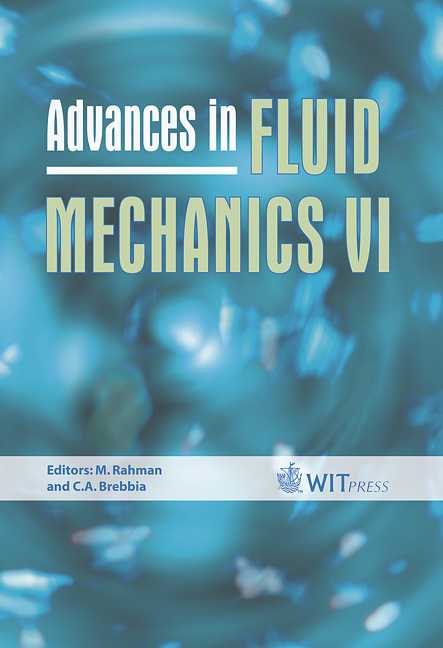Simulations Of Viscoelastic Droplet Deformation Through A Microfluidic Contraction
Price
Free (open access)
Transaction
Volume
52
Pages
10
Published
2006
Size
528 kb
Paper DOI
10.2495/AFM060081
Copyright
WIT Press
Author(s)
D. J. E. Harvie, M. R. Davidson & J. J. Cooper-White
Abstract
A modified Volume-of-Fluid numerical method is developed to predict the transient deformation of a viscoelastic drop surrounded by a more viscous Newtonian liquid passing through an axisymmetric microfluidic contraction. Viscoelastic effects are represented using an Oldroyd-B rheological model and can be generated in practice by the addition of small amounts of polymer. The numerical method is tested against experimental observations of viscoelastic drops forming at nozzles. We show that these simulations reliably reproduce flow and drop deformation. Predictions of drop shape and elastic extension are then presented and discussed for drop motion through a microfluidic contraction, and these results are compared against results for an equivalent Newtonian only system. Keywords: viscoelastic, fluid dynamics, Oldroyd-B, Boger fluid, Volume of Fluid, interfacial, contraction, polymer. 1 Introduction Microfluidic technology promises to revolutionise chemical and biological processing in the same way that the integrated circuit revolutionised data processing three decades ago [1]. Key to the operation of microfluidic devices will be the manipulation of droplets of viscoelastic fluids, as many biological and biomedical liquids to be processed contain long chain molecules that stretch and rotate in response to local strain fields. As a contraction can induce mixing in droplets, as well as significantly alter their shape, an understanding of how droplets behave when passing through such a geometry will be essential to the operation of future microfluidic devices.
Keywords
viscoelastic, fluid dynamics, Oldroyd-B, Boger fluid, Volume of Fluid, interfacial, contraction, polymer.





